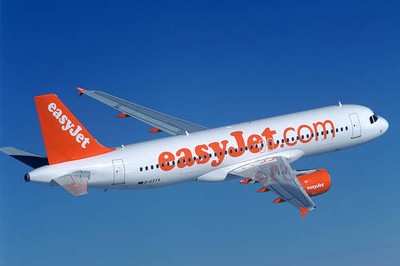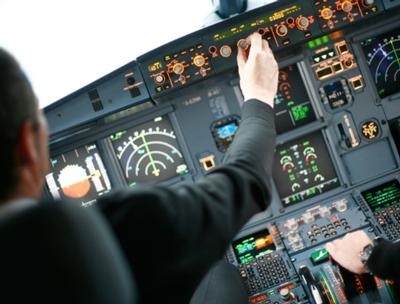Airline Also Adopting 'Paperless Airplane' For Increased Fuel Efficiency
UK airline easyJet will be applying new and innovative technologies to help operate its fleet of 220 Airbus A319 and A320 aircraft even more efficiently and reduce delays while maintaining its punctuality and safety records.

The airline said in a news release that it is working with Coptercraft, Measurement Solutions and Bristol Robotics Laboratory to modify existing technology so that drones can be employed to inspect its fleet of Airbus aircraft. The drones will be programmed to scan and assess the planes reporting back to engineers on any damage which may require further inspection or maintenance work. The UAVs are currently in development with a view to evaluating them in the coming months and introducing them into operation as early as next year.
“Drone technology could be used extremely effectively to help us perform aircraft checks," said Ian Davies, Head of Engineering for easyJet. "Checks that would usually take more than a day could be performed in a couple of hours and potentially with greater accuracy.”
“Aircraft inspection is a great application for drones," said Dr. Arthur Richards, Head of Aerial Robotics at the Bristol Robotics Laboratory, a partnership between the University of Bristol and the University of West England. "Coupled with smart navigation and computer vision, they can get accurate data from really awkward places. We look forward to working with easyJet to develop safe, effective and efficient drone systems for this challenge.

In the cockpit, easyJet expects to complete the fitting of Panasonic Toughpads, in place of laptops and printed navigational charts, in all of its cockpits by the end of this month. This means that the airline is already nearing a completely paperless plane. These tablets will also make easyJet one of the first airlines to use this type of device in all phases of flight and on the ground. By replacing heavy printed logbooks easyJet expects to reduce fuel costs by around $500,000 each year. Every kilo of weight taken off easyJet’s fleet of aircraft saves around $20,000 per year.
In addition, new ‘e-paper’ technology created by Sony, could see easyJet completely eradicate printed forms in the cabin; this would mean an entirely paperless plane. This new Digital Paper is the latest lightweight design from Sony which makes it feel like the user is writing on paper. Completed forms can be quickly saved into a central database enabling the airline's operational team quick and easy access to information on all of the aircraft. Trials will start in the coming months.
And, easyJet is working with FlightWatching to install a state-of-the-art early fault prognosis tool which can provide the airline’s operations and engineering staff with live updates directly from all of its aircraft as they fly.
The system is an innovative web-based software system from FlightWatching called WILCO which can receive real time values of aircraft system parameters via the ACARS messaging system. This data is then transformed into an animated schematic that can be used to predict any potential issues or to troubleshoot known technical faults before the plane lands. This means the prognostic tool will enable the ground-based engineers to start investigation mid-flight and ensure that the correct engineering resource or parts are available for when the flight lands, thus increasing efficiency.
"We have examined and assessed cutting edge technology across many different industries and are now applying a range of new technologies to the aviation sector for the first time to help us run our fleet of aircraft more effectively, efficiently and safely,” said easyJet CEO Carolyn McCall. "The advantage of these emerging technologies is threefold - freeing up our engineering team to undertake more skilled tasks, keeping our costs down which in turn keeps our fares low and helping to minimise delays so maintaining our industry leading punctuality for our passengers.
“Safety is our number one priority and so all of these new technologies will be applied by our experienced engineering and flight crew to ensure our leading safety record is maintained."
(Images from file)
 Bolen Gives Congress a Rare Thumbs-Up
Bolen Gives Congress a Rare Thumbs-Up The SportPlane Resource Guide RETURNS!!!!
The SportPlane Resource Guide RETURNS!!!! Buying Sprees Continue: Textron eAviation Takes On Amazilia Aerospace
Buying Sprees Continue: Textron eAviation Takes On Amazilia Aerospace Hawker 4000 Bizjets Gain Nav System, Data Link STC
Hawker 4000 Bizjets Gain Nav System, Data Link STC Echodyne Gets BVLOS Waiver for AiRanger Aircraft
Echodyne Gets BVLOS Waiver for AiRanger Aircraft




